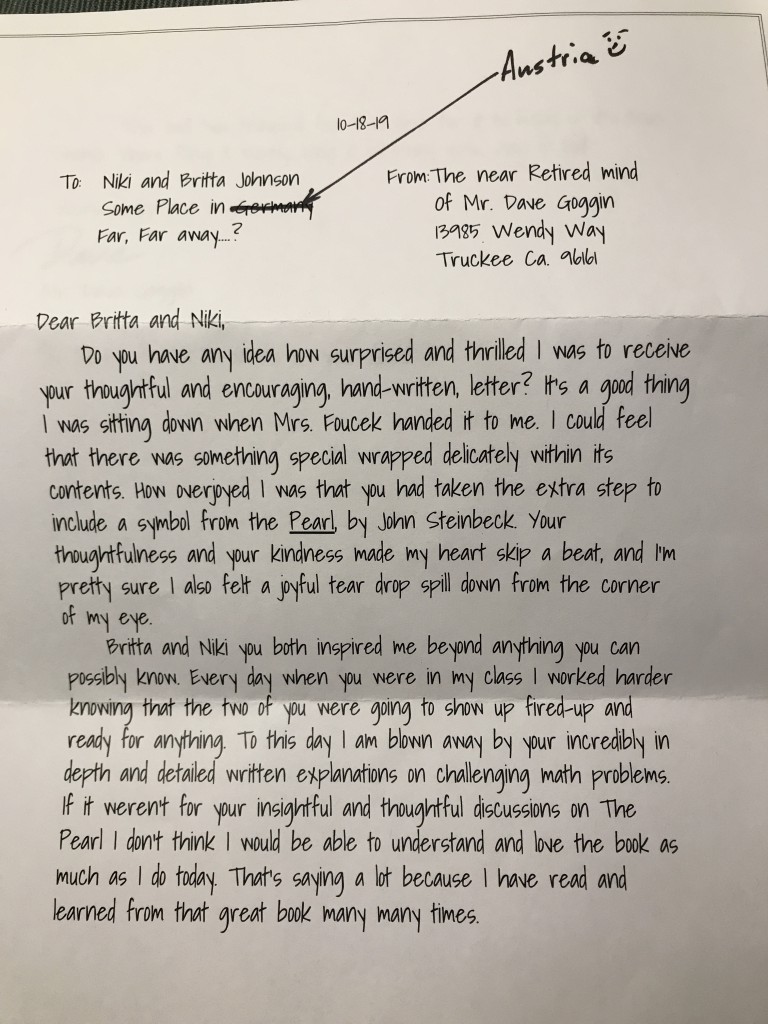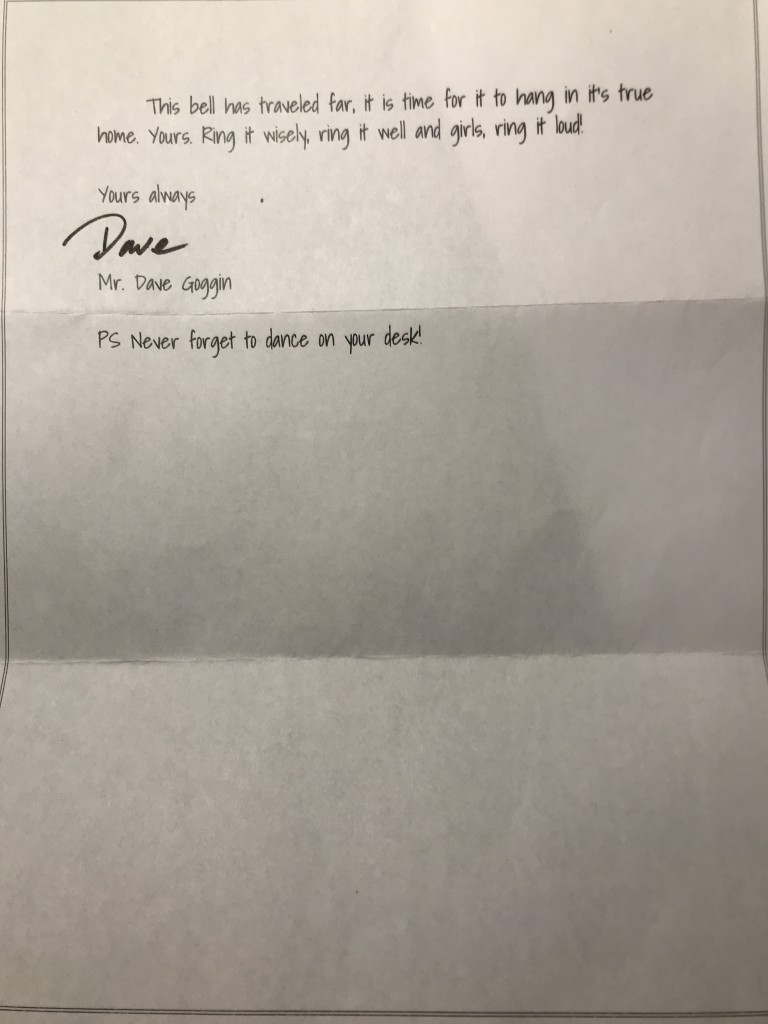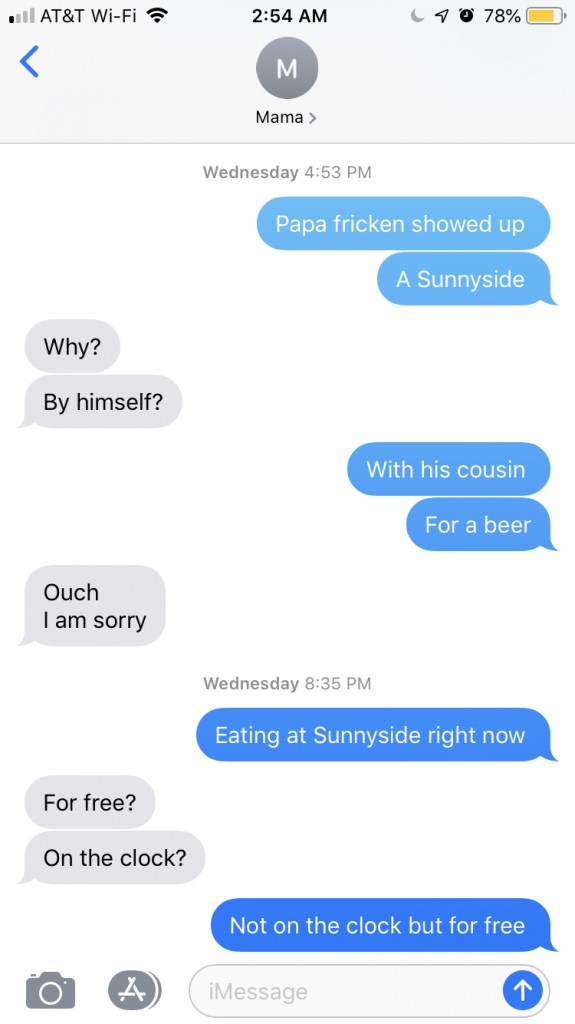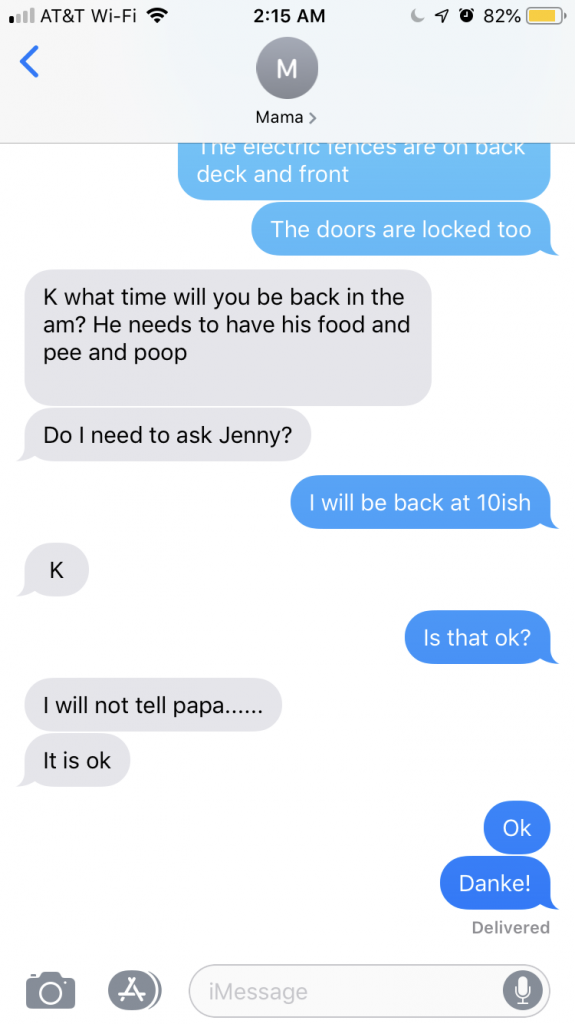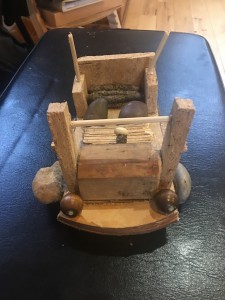Papa’s European adventures, solo ~ Prague
Summary: I had visited Prague twice before:
1. In November 1990 (during Thanksgiving) with John Fehan by train. It was a thrilling trip; communism had collapsed only a year prior, and we had no reservations or plans. We got off the train and were greeted by numerous people who were renting their flats (capitalistic entrepreneurs!). We toured around, and found a great jazz club off Old Town Square.
2. Some time in 1992 with Rodney Mayo and others (forget who). We drove there and to be honest I have no recollection of what we did (likely an extended weekend at most).
Today Czech (Prague) is beautiful, but crowded. Really crowded. Whereas Hungary receives about 3 million visitors a year, Czech receives more than 3 times that (10 million, both #’s from Wikipedia). Compounding that, whereas the Budapest history is spread out all around town on both sides of the Danube, Prague history is mostly centralized in the Old Town (and primarily the Old Town Square) and the Prague Castle (in Lesser Town, on the other side of the Vltava River). Crowding is so overwhelming that most of the small Prague tours advertised via Airbnb marketed the fact that they would avoid the crowds – which makes sense practically but doesn’t make sense experientially as you don’t get to see (via the tour) many of the historical sites.
My train arrived in Prague around 4 on a Thursday; after checking into my Airbnb room in Lesser Town (50 Euro per night, sorta pricey) I went to dinner at Ferdinanda, which was fantastic and hard to find so it seemed like more of a local hang out.
Friday morning I took a 2 hour tour with David and a nice couple Mark and Susan from Wisconsin (they would continue on to Israel after Prague). The tour was nothing like the tour I enjoyed in Budapest; David talked only (very) superficially about Czech history, and in the end I learned very little from the tour (I had already gotten my bearings straight from walking around prior to the tour). After the tour I relaxed a bit in the room (the crowds were such a deterrent I decided to wait until dark to go back out and walk around). After dinner once more at Ferdinanda I wandered for 3 hours, through the Old City, across the Charles Bridge, and up to the Prague Castle which was entirely empty of people. I was able to see the St. Vitus Cathedral with literally no one around (earlier that day there was a line of hundreds of people waiting to get into the cathedral grounds), which was really cool. Back in my room by 10PM, I realized I had done and seen all I wanted to and so decided to leave first thing on Saturday (one big advantage of a Eurail pass; you just get on). 42 hours after my arrival, I was leaving Prague.
—
The Czechs (Slavs) have lived in Bohemia since the 6th century. The slavic breakdown: East Slavs (chiefly Russians, Ukrainians, and Belarusians); West Slavs (chiefly Poles, Czechs, Slovaks, and Wends, or Sorbs); and South Slavs (chiefly Serbs, Croats, Bosnians, Slovenes, Macedonians, and Montenegrins).
Bohemia is the westernmost and largest historical region in the present-day Czech Republic. Today Bohemia sometimes refers to the entire Czech territory, including Moravia (southern Czech) and Czech Silesia (south east slice of Czech), all of which were at one time or another the Lands of the Bohemian Crown and ruled by Bohemian kings.
Like Hungary, Bohemia has had a lot of different masters. Bohemia was a kingdom in the Holy Roman Empire from 1004 to 1804 (when the Holy Roman Empire effectively ended); a crown land of the Austrian Empire from 1804 to 1867 (although Austria played a roll before that, as a part of the Holy Roman Empire. After the death of King Louis II in the Battle of Mohács in 1526, Archduke Ferdinand I of Austria became the new King of Bohemia and the country became a constituent state of the Habsburg Monarchy); and a part of the Austro-Hungarian empire from 1867 (the Austro-Hungarian Compromise of 1867 established the dual monarchy of Austro-Hungarian) to 1918 (end of WWII and the end of the Austro-Hungarian Empire). Bohemia was one of the five lands of Czechoslovakia founded in 1918 (defying claims of the German speaking inhabitants that regions with German speaking majority should be included in the Republic of German-Austria); was subsequently joined to Nazi Germany as the Sudetenland between 1938 and 1945; and in 1949 it was formally dissolved during the abolition of the land system following the communist coup d’état. In 1989 the Velvet (meaning peaceful) Revolution freed Czechoslovakia from the Soviet Union, and in 1993 Czech and Slovakia peacefully separated as well (self-determination, so to speak).
Along the way Germans came by invitation (the mid-13th century saw the beginning of substantial German immigration into Bohemia, into the northern and western border regions known collectively as the Sudetenland, to replace losses from the Mongol invasions in 1241), but were also escorted out by invitation (expulsions after 1945 WW II).
Language was one of the most contentious issues in Austro-Hungarian politics; all governments faced challenges in deciding on the official language of government and education. The minorities sought the widest opportunities for education in their own languages, as well as in the “dominant” languages — Hungarian and German. By the “Ordinance of 5 April 1897”, the Austrian Prime Minister Count Kasimir Felix Badeni gave Czech (meaning non-Catholic) equal standing with German (Catholic) in the internal government of Bohemia; this led to a crisis because of nationalist German agitation throughout the empire. The Crown dismissed Badeni.
It’s partially due to the reformation/protestant movement of Jan Hus that Bohemia eventually came under control of the Austro-Hungarian empire (via the Habsburg Monarchy), as the Catholics didn’t trust Czech speaking Bohemia with all their religious dissidents. Despite that Bohemia was predominantly non-Catholic from the early 15th century until the early 20th century.
The historical center of Prague is divided by the Vltava river into two parts: the Litte Side (Malá strana) and the Old Town (Staré mesto). The New Town, established by Charles IV, King of Bohemia in 1346, extends east past the Old Town.
The Charles Bridge connects both parts of the historical center. The bridge is named after Charles IV, King of Bohemia in 1346. His reign brought Bohemia to its peak both politically and in total area, resulting in his being the first King of Bohemia to also be elected as Holy Roman Emperor.
The bridge construction started in 1357 and finished in the 15th century. The bridge replaced the old Judith Bridge built in 1158–1172 that had been badly damaged by the 1342 flood. This new bridge was originally called Stone Bridge (Kamenný most) or Prague Bridge (Pražský most) but was renamed “Charles Bridge” in 1870. As the only means of crossing the river Vltava until 1841, Charles Bridge was the most important connection between Prague Castle and the city’s Old Town and adjacent areas.
The royal town (a town founded by the king) of Malá Strana was founded by King Ottokar II of Bohemia in 1257. It was created by amalgamating a number of settlements beneath the Prague Castle; the original residents were expelled and mostly German craftsmen and merchants were invited by the king. In the second half of the 14th century Malá Strana was extended by the King and Holy Roman Emperor Charles IV who built a new defensive wall called Hunger Wall. In 1419-1420 Malá Strana was burnt down by the Hussites, and in 1541 the town was damaged again by a fire but was rebuilt in the Renaissance style and many palaces of nobility were built (today home to many Embassies).
The Prague Castle (Pražský hrad), which began being built in 870, was a seat of power for kings of Bohemia (the Bohemian Crown Jewels are kept inside the castle), Holy Roman emperors, and today is the official office of the President of the Czech Republic. Unlike counterparts in other Central European countries such as Austria and Hungary, who are generally considered figureheads, the Czech president has a considerable role in political affairs. Because many powers can only be exercised with the signatures of both the President and the Prime Minister of the Czech Republic, responsibility over some political issues is effectively shared between the two offices.
The Metropolitan Cathedral of Saints Vitus, Wenceslaus and Adalbert is a Roman Catholic cathedral and the seat of the Archbishop of Prague. Until 1997 the cathedral was dedicated only to Saint Vitus, and is still commonly named only as St. Vitus Cathedral. The St. Vitus Cathedral is a prominent example of Gothic architecture and is the largest and most important church in the country. Located within Prague Castle it contains the tombs of many Bohemian kings and Holy Roman Emperors.
The Staré mesto is anchored by Old Town Square, with the medieval astronomical clock “Orloj”, first installed in 1410 which makes it the third-oldest astronomical clock in the world and the oldest one still in operation.
The Gothic Church of Our Lady before Týn is the main church of Prague since the 14th century. The Baroque St. Nicholas Church is also located in the square.
The square’s center is home to a statue of religious reformer Jan Hus, who was burned at the stake on 6 July 1415 for his Hussite beliefs; his execution, as well as five consecutive papal crusades against followers of Hus, forced the Bohemians to defend themselves in the Hussite Wars (1419–1434) (a civil war of sorts). The Jan Hus Memorial was erected on 6 July 1915 to mark the 500th anniversary of his death.
The Hussites were a pre-Protestant Christian movement that followed the teachings of Hus and the Bohemian Reformation; and was propelled by social issues. Although Hussites were one of the most important forerunners of the Protestant Reformation, it was a regional movement that failed to expand anywhere farther.
The Hussite cause gradually splintered into two main factions, the moderate Utraquists and the more fanatic Taborites. The Utraquists made an agreement with the Catholic Church during the Hussite Wars (1423) as they found the more radical views of the Taborites distasteful. Additionally, with general war-weariness and yearning for order, the Utraquists were able to eventually defeat the Taborites in the Battle of Lipany in 1434 and became the most common representation of the Hussite faith in Bohemia. However, despite an apparent victory for the Catholics, the Bohemian Utraquists were still strong enough to negotiate freedom of religion in 1436 via the Compacts of Basel, declaring peace and freedom between Catholics and Utraquists. 26 years later in 1462 Pope Pius II declared the compacts to be invalid. Catholics and Utraquists were emancipated (the Utraquist and the Catholic faiths were declared equal in front of the law) in Bohemia after the religious peace of Kutná Hora in 1485. This agreement finished a long series of religious conflicts in the Czech lands and constituted a definitive end to the Hussite Wars.
The majority Hussite ruled in the Czech Republic for two centuries until Roman Catholic Christianity was reimposed by the Holy Roman Emperor after the 1620 Battle of White Mountain during the Thirty Years’ War, which led to centuries of Habsburg (Catholic) persecution. The Thirty Years’ War was between various Protestant and Catholic states throughout Europe in the fragmented Holy Roman Empire. It eventually became less about religion and more of a continuation of the France–Habsburg rivalry for European political pre-eminence. The war was started when the new Habsburg Holy Roman Emperor Ferdinand II tried to impose religious uniformity on his domains, forcing Roman Catholicism on its peoples. This went against the Peace of Augsburg, a treaty between Charles V the Holy Roman Emperor and the Schmalkaldic League, signed in September 1555 which officially ended the religious struggle between the two groups and made the legal division of Christianity permanent within the Holy Roman Empire, allowing rulers to choose either Lutheranism or Roman Catholicism as the official confession of their state. If a ruler chose for his or her subjects to practice Lutheranism, the population which endorsed and practiced Lutheranism increased greatly.
The Battle of Bílá Hora (“White Mountain”), fought on 8 November 1620 near Prague, was an important battle in the early stages of the Thirty Years’ War. 15,000 Bohemians and mercenaries under Christian of Anhalt were defeated by 27,000 men of the combined armies of Ferdinand II the Holy Roman Emperor and the German Catholic League. The battle marked the end of the Bohemian period of the Thirty Years’ War and decisively influenced the fate of the Czech lands for the next 300 years. Its aftermath drastically changed the religious landscape of the Czech lands after two centuries of Protestant dominance. The result of the 1620 battle brought two centuries of recatholicization of the Czech lands and the decline of the Czech-speaking aristocracy and elite as well as the Czech language (accompanied with the growing influence of German-speaking elites). Roman Catholicism retained majority in the Czech lands until the late 20th century. Ever since the 1620 Battle of White Mountain, the Czech people have been historically characterised as “tolerant and even indifferent towards religion”. Today 40% consider themselves atheist; 40% are Roman Catholics; 5% are Protestant; 3% are members of the Orthodox Church; and 13.4% are undecided.
In front of the Old Town Hall is a memorial to martyrs (including Jan Jesenius and Maxmilián Hošťálek) beheaded on that spot during the Old Town Square execution by Habsburgs, after the Battle of White Mountain. Twenty-seven crosses mark the pavement in their honour. The crosses were installed during the repairs of the Old Town Hall after the WW2, while a nearby plaque which lists the names of all 27 victims dates from 1911.
On 3 November 1918, a Marian Column that had been erected in the square shortly after the Thirty Years’ War was demolished in celebration of independence from the Habsburg empire.
The former Jewish quarter “Josefov” is nearby the Old Town Square and is formerly the Jewish ghetto of the town.
Jews are believed to have settled in Prague as early as the 10th century. The first pogrom was in 1096 (the first crusade) and eventually they were concentrated within a walled Ghetto. In 1262, Přemysl Otakar II issued a Statuta Judaeorum which granted the community a degree of self-administration. In 1389, one of the worst pogroms saw some 1,500 massacred at Easter Sunday. The ghetto was most prosperous towards the end of the 16th century when the Jewish Mayor, Mordecai Maisel, became the Minister of Finance.
In 1850, the quarter was renamed “Josefstadt” (Joseph’s City) after Joseph II, Holy Roman Emperor who emancipated Jews with the Toleration Edict in 1781. Two years before Jews were allowed to settle outside of the city, so the share of the Jewish population in Josefov decreased, while only orthodox and poor Jews remained living there.
Most of the quarter was demolished between 1893 and 1913 as part of an initiative to model the city on Paris. What was left were only six synagogues, the old cemetery, and the Old Jewish Town Hall (now all part of the Jewish Museum in Prague).
Posted in Papa Comments Off on Papa’s European adventures, solo ~ Prague
